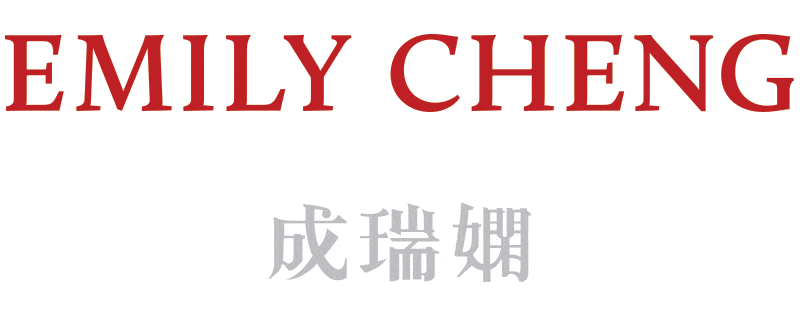REVIEWS
Lauren Tresp reviews Emily Cheng's solo show at Zane Bennett Contemporary Art for THE Magazine
Read More >
G. Roger Denson reviews Emily Cheng's solo show at the Museum of Contemporary art in Taipei for the Huffington Post.
Read More >
Edward Sozanski reviews Emily Cheng's solo show at the Schmidt Dean Gallery for the Philadelphia Inquirer.
Read More >
Roberta Smith reviews Emily Cheng and Lois Conner at Plum Blossom Gallery, for the New York Times.
Read More >
Jonathan Goodman discusses in an article for Yishu Journal of Contemporary Art the relationship of ornament in her paintings.
Read More >
Alice Guillermo reviews Emily Cheng's solo show at the Ayala Museum, in Manila for Asian Art News and Business Mirror.
Read More >
EXCERPTS FROM ART REVIEWS AND ESSAYS
"Emily Cheng's work reminds us that painting is still able to compel attention. ……The oils are contradictory in two ways. In their coloring and design, they're ebullient while simultaneously communicating gravity and, in a few instances, an elegiac mood."
-Edward J. Sozanski, Philadelphia Inquirer
"On small layered sheets of frosty Mylar, Cheng's delicate and inventive play with symbols, styles mark-making and translucency creates semiotic reveries."
- Ken Johnson, New York Times
"Her art is unusually ambitious in an art-historical sense, for she attempts to address the problem of style across boundaries of culture and time."
- Jonathan Goodman, Art News
"Emily Cheng's "Bodhissatva Series" fuses Persian miniatures, medieval illuminations and painterly abstractions into monoprints of near-psychedelic richness."
–Joanne Silver, Boston Herald.
"Cheng presents the viewer with glowing redressings of familiar and unfamiliar spiritual imagery in seductive and masterly compositions through which color sings and form becomes an abstract evocation of an inner world. It is not possible to convey the beauty of these images without sounding clichéd or hackneyed. ….What sets Cheng's work apart is a sincere and well-informed understanding of her sources, and intense sensitivity to the religious /cultural significance of the images and what comes across as a love of the material, both in the original and her own contemporary usage. …..With Cheng's aid we are given the chance to connect our world with ones form the past and see our humanity in the process."
- Robert Brasier, Everybody's News.
"…Among the challenges for painting now is to create new forms of pictorial order that acknowledge the intensified contingency of contemporary life. By accepting this challenge, Chengspaintings ask the question: What does it mean to inhabit the world?"
-Jonathan Hay, Pleasure as Medium, Almost Mapped and Charted.
"Completely source agnostic, Cheng is bent on form and form alone and relies solely on her aesthetic and intuitive judgment while assembling images. And, perhaps, it is because of that unwavering focus that her work has been able to achieve a level of harmony that it does. In a sense, she has succeeded in teasing meaning out of form and shows us that it, in itself, can exert great power, both palpable and transcendental."
–Priya Malhotra, Asian Art News
“The concept of a work characterized by unity lends itself to sentimentality. However, Cheng’s work avoids creating some idealistic vision despite her interest in synthesis. Her pictures are too lyrical, too imaginative, and too artificial to be reflections on this reality. They hint instead at an alternate reality, a mystical realm that exists just out of sight in which global meshing has already taken its course. In this light, Cheng’s images serve as delightful oracles, painting the way to a world with greater unity.”
– Lauren Tresp, THE Magazine
“Taken together the two shows (MOCA, Taipei and at Hanart Gallery, Hong Kong), make for an exhilarating visual and conceptual experience and contemplation of the human proclivity for invention in terms of metaphysical, theological and ethical teachings and their expressions in the objects and ideas of artistic practice throughout global history. The two shows are also perfectly suited to the new breed of cultural nomad eager to travel the world in pursuit of the diverse experience of the world’s emergent contemporary cultural and artistic hybrids.”
– G. Roger Denson, Huffington Post
“Ms. Cheng’s radiantly colored, radially composed paintings combine the polished riffs of post-abstraction with bits of decorative patterns or schematized lotus designs. The paintings’ translucent colors and delicate linear fragments seem to levitate before the eyes, as if bits of Chinese ceramics or embroidery were drifting through layers of folded, colored air.”
– Roberta Smith, New York Times
